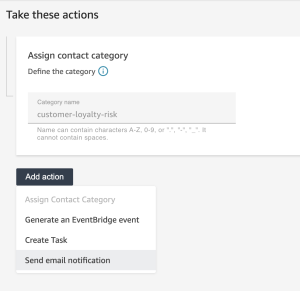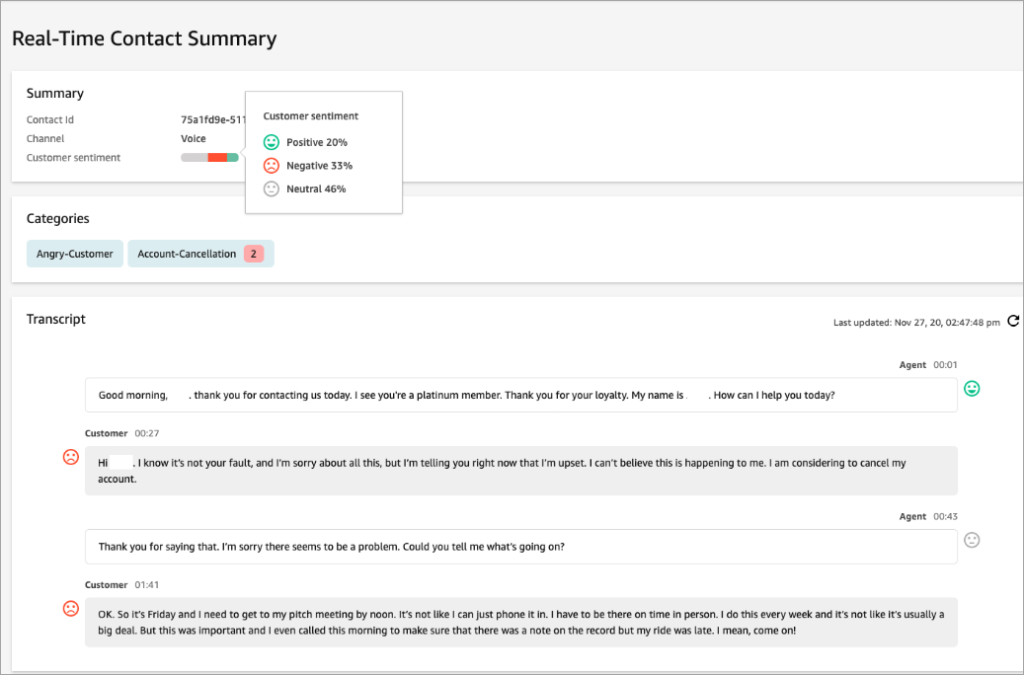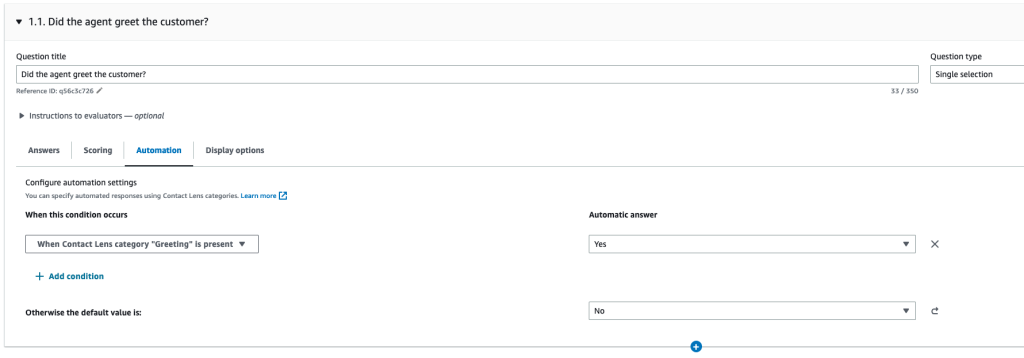AWS Contact Center
Best practice: How to use Amazon Connect Contact Lens to improve agent performance
Introduction
Agents play a critical role in a company’s customer experience strategy. They are often the primary point of contact for customers when they have questions, concerns or complaints. The quality of customer service provided by agents can have a significant impact on customer satisfaction and loyalty. Moreover, agents are not identical and perform at various levels from hour-by-hour, day-by-day, and week-by-week. Additionally, contact quality and agent performance management can unearth product and operational issues that may have otherwise gone unnoticed.
Amazon Connect offers agents and managers an omnichannel experience encompassing voice, chat, and tasks. It comes with built-in features for call and screen recording interactions, as well as monitoring interactions. Amazon Connect Contact Lens provides conversational analytics, agent screen recordings and automated evaluations to enhance agent performance. This post will explore a set of best practice recommendations to bring together all these capabilities together including:
- Call and screen recording interactions
- Extracting customer insights using conversational analytics
- Achieving automated contact and agent performance management
- Locating key interactions to drive actionable insights
1. Call and screen recording interactions
Recording interactions plays a pivotal role in a contact center. This invaluable data provides an opportunity to gain profound insights into customer preferences, pain points and expectations. Ultimately empowering you to enhance your services and deliver exceptional customer experiences. Leveraging Amazon Connect’s recording capabilities, you can capture and analyze voice, chat, and task interactions. Recording interactions enables:
- Quality assurance and training
- Performance evaluation
- Customer insights and analytics
- Training and coaching
Enabling call and screen recording in Amazon Connect is documented in the Amazon Connect Administration guide.
2. Extract customer insights using conversational analytics
Conversational analytics enhances call recordings by introducing metrics like customer sentiment, hold durations and transcriptions. These metrics can be used to group interactions together enabling supervisors to derive common trends. Amazon Connect Contact Lens categorizes interactions together using rules. Rules can also be used to trigger alerts for intervention in real-time. Meanwhile, sensitive information can be redacted to ensure security and privacy is mandated without detracting from the value of these conversations.
Contact Lens rules
Setting up Contact Lens rules is simple. This is an example that identifies an at-risk customer

Common rules that supervisors enable include:
- Missed agent greeting or conclusion
Identify when agents go off script to targeting training. - Calls with high hold times or non-talk times
Lead indicators for agents placing customers on hold to request assistance or search for knowledge with an organization. Identifying these conversations highlights knowledge gaps to address. - Compliance breach from agents not stating terms and conditions
Allows organizations to close compliance gaps and ensure they are meeting their legal obligation. - Customers at risk
Alert retention teams to act in real-time when customers show negative sentiment and use language such as “close my account” or “I am taking my business elsewhere”. - Double authentication
Agents transferring interactions and repeating authentication can be educated to remove unnecessary activities. This reduces the cost to service and improves customer’s experience. - Customer escalation or Profanity on an interaction
Ensure agents are trained to handle difficult conversations.
For a complete list of Amazon Connect rules refer to the following guide.
Email and task notification
Taking action as issues arise increases the likelihood of a favourable resolution. For example, rules can trigger an email. A customer who states “close my account” can notify the retention team in your organization to act. Equally, you can be more assertive and assign a task to the retention team.

To setup actions on rules refer to the Amazon Connect administration guide.
Alerting on rules
Instead of manually listening into interactions one by one, supervisors can visualize multiple interactions along with customer sentiment to better understand the root causes and act accordingly. For example, the below screenshot shows a supervisor alert for a Contact Lens rule “Escalation, Angry customer” being triggered followed by the contact summary once the alert is selected.


3. Automate quality across your contact center
While manual evaluations are impactful at identifying issues, supervisors only have time to review a subset of all interactions. You can combine automated quality for visibility across all interactions, before investing in manual evaluations. This makes manual intervention more impactful.
Evaluations can be created with questions answered by Contact Lens rules. For example “Did the agent greet the customer correctly?”. Create a rule with the correct language and any interaction not meeting the criteria is where supervisors should invest time coaching. Refer to the following screenshot where the question is automatically scored as “Yes” if the Contact Lens “Greeting” rule is present.

Whereby the “Greeting” rule is made of the following logic.

Other examples may include:
- Did the customers mention certain key words
- Did the agent read the compliance terms
- Did the customer sentiment change to positive at the end of the conversation
Refer to the Evaluate agent performance section of the administration guide for more details.
4. Locate key interactions to drive actionable insights
Supervisors searching to extract value from interactions are challenged by where to start due to the sheer volume of interactions in a contact center. This results in random selection of interactions which rarely leads to a positive outcome, and instead creates a “needle in a hay stack” scenario.
Using Contact Search filters supervisors can be prescriptive in finding the right interactions.
For example, creating a “Saved search” to find interactions that are:
- > 1min (filter out short calls where customers are looking to vent and not wanting a solution)
- Sentiment starts low and moved to neutral or high
- Based on a certain queue

Optimize agent behavior
An agent’s time is the main cost contributor in running a contact center. Uncovering opportunities to optimize behavior and reducing Average Handle Time (AHT) is greatly beneficial. Conversational analytics enables non-talk time from an agent to be quickly analyzed. For example, searching for non-talk time as a percentage of the interaction or duration of the longest non-talk time.

Once you locate a contact record, Contact Lens highlights non-talk time in a bar graph and the exact time measurement.

Furthermore, an audio file of a screen recording can be visually represented to display sections of silence allowing you to quickly navigate to that section and then view the screen recording to understand the agent behavior during that section of the recording .

Theme detection
In order to understand unstructured customer conversations theme detection applies machine learning to group contacts with similar issues and display the resulting themes. This enables you to answer the question “what are my customers talking to me about?” without telling the system what to look for. Businesses can spot common reasons for customer outreach (e.g. “cancel reservation”, “delayed order”, etc.).

Putting all these recommendations together allows for a single pane of glass to view for:
- Call and screen recordings
- Understanding customer sentiment
- Determining hold and cross talk time
- Transcription with sentiment analytics per line and per party
- Automated quality evaluations

Conclusion
In this blog we delved into a collection of effective techniques that examined conversational analytics, automated quality management, and conducted an in-depth analysis of interactions to comprehend their underlying themes and root causes.
If you are interested in learning more refer to the Amazon Connect Administration Guide.
If you have any questions or need guidance on any of the topics covered here, we are here to help. You can reach us via the AWS Support Center. For AWS customers that have enterprise support, engage your TAM to help with any support-related items to help escalate any urgent issues.

Kun Qian is a seasoned product leader at Amazon Web Services, where he leads multiple product areas within Amazon Connect. With a deep understanding of the CCaaS landscape, Kun is responsible for driving go-to-market strategies and shaping product initiatives for these critical communication services. Kun actively engages with customers and partners around the world. By actively seeking feedback, resolving issues, and plays a crucial role in shaping customer experiences and gathering insights to drive the development of new capabilities.

Elias Sayigh is a Solutions Architect specializing in Amazon Connect, based in Sydney, Australia. Elias enjoys helping customers understand how they can quickly and easily improve their customer experience using cloud technologies. Prior to fully embracing AWS, Elias accumulated over 15 years of invaluable experience in support, implementation, and architecture roles, both as a customer and partner.